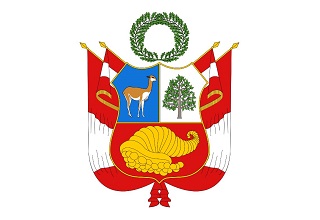Regarding the Inspection and Quarantine Requirements for the Beef from Russia to China
1. Basis for inspection and quarantine
(1) Laws and regulations.
The Food Safety Law of the People's Republic of China and its implementing Regulations, the Import and Export Animal and Plant Quarantine Law of the People's Republic of China and its implementing Regulations, the Import and Export Commodity Inspection Law of the People's Republic of China and its implementing Regulations, the Special Provisions of The State Council on Strengthening the Supervision and Administration of Food and other Product Safety, And the People's Republic of China Import and Export food safety Administration Measures, the People's Republic of China Imported food overseas production Enterprise registration Administration.
(2) Bilateral Protocols.
Protocol between the General Administration of Customs of the People's Republic of China and the Department of Veterinary and Phytosanitary Supervision of the Russian Federation on Inspection, Quarantine and Sanitary Requirements for Beef Imported from Russia from China
2. Import products are allowed
The import of permitted beef means frozen or chilled boneless or bone-in skeletal muscle (including attached fat) from cattle under 30 months of age.
Edible cattle by-products that are allowed to be imported include:
(1) Frozen beef tendon (including beef tendon, plate tendon, etc., less than 30 months old);
(2) Frozen cow diaphragm (under 30 months of age);
(3) Frozen cattle hooves (unbox) (under 30 months of age);
(4) Frozen beef whip (under 30 months of age);
(5) Frozen cow heart tube (under 30 months of age);
(6) Frozen bovine cartilage (under 30 months of age);
(7) Frozen cow stomach (under 30 months of age);
(8) Freeze unrefined body fat (under 30 months of age).
3. Requirements of production enterprises
Beef exports to China (including slaughtering, cutting, processing and storage enterprises) should be located in GACC recognized foot-and-mouth disease non-immune-free areas, under the supervision of the Russian Federal Veterinary and Phytosanitary Supervision Service, in accordance with the requirements of Chinese and Russian laws and regulations on veterinary health and public health.
Beef exporting enterprises to China shall be registered with GACC, and the beef produced by the approved enterprises can only be exported to China after the date of registration. Unregistered meat enterprises are not allowed to export beef to China.
4. Inspection and quarantine requirements
4.1 Management of animal epidemic diseases.
(1) There is no bovine spongiform encephalopathy, Peste des petits ruminants, rinderpest or bovine infectious pleuropneumonia in Russia.
(2) Russia implements BSE surveillance and feed ban in accordance with the requirements of the World Organization for Animal Health (WOAH), and establishes an effective traceability system.
(3) Russia implements regionalized management of foot-and-mouth disease and is recognized by GACC.
4.2 Conditions to be met for the slaughter of live cattle.
(1) Born, raised and slaughtered in a FMD non-immune-free area of Russia recognized by GACC and WOAH, with a unique identification that can be traced to the farm where they were born and raised.
(2) from a farm that has not introduced any cloven-hoofed animals in the 12 months prior to slaughter from a region or country outside the FMD (non-immune-free) and bovine nodular skin disease (nodal skin disease) free zone of Russia.
(3) from farms that have not had clinical cases of bovine nodular skin disease, Q fever, tuberculosis, parattuberculosis, anthrax, bovine viral diarrhea/mucosal disease, brucellosis (abortive type), bovine cysticercosis, and Rift Valley fever in the 12 months before slaughter.
(4) from places that have not been subject to quarantine restrictions or monitoring due to the occurrence of highly dangerous animal diseases and infectious diseases listed in the animal health regulations of China and Russia and WOAH in the 6 months prior to slaughter.
(5) Feeding on the original farm for at least 3 months before slaughter.
(6) No live anthrax vaccine has been administered for at least 14 days before slaughter, and no bovine nodular skin disease vaccine has been administered for at least 60 days.
(7) Never fed feed containing ruminant meat and bone meal and oil residue.
(8) Cattle and other animals that have not come into contact with other species of animals, cattle that do not meet the requirements of the Protocol and cattle and other animals that do not meet the requirements of the GACC registration during transport to and in the slaughterhouse.
4.3 Processing requirements.
4.3.1 Slaughter cattle for beef exported to China:
(1) from a farm that complies with the provisions of the Protocol.
(2) Slaughtering, processing and storage in GACC registered enterprises.
(3) Have never used veterinary drugs and feed additives prohibited by both parties.
(4) Carry out pre - and post-mortem inspection in accordance with relevant laws and regulations of China and Russia, and the results are qualified.
(5) Remove the brain, skull, eyes, spinal cord, tonsils and end of the ileum in an effective manner during processing to prevent contamination of the rest of the carcass.
(6) No stunning method of injecting compressed air or gas into the brain cavity or spinal cord stabbing was used.
4.3.2 The carcass of cattle shall be pre-cooled and aged at temperatures above 2°C for at least 24 hours after slaughter and before division, and the central temperature of the meat shall be between 2°C and 4°C. The pH between the two longissimus dorsi muscles in the carcass is below 6.0.
4.3.3 The beef exported to China shall be subject to the Russian national residue control plan, which shall prove that the residues of veterinary drugs, pesticides, heavy metals, environmental pollutants and other toxic and harmful substances in the products do not exceed the maximum limits set by China and Russia.
4.3.4 The beef exported to China has not been contaminated with pathogenic microorganisms and meets the requirements of Chinese and Russian laws and regulations.
4.3.5 During the epidemic period of major public health epidemics, enterprises shall, in accordance with relevant international regulations and standards, formulate necessary meat safety prevention and control measures to ensure that meat is not cross-contaminated during the whole process of raw material reception, processing, packaging, storage and transportation.
4.3.6 The product is hygienic, safe and suitable for human consumption.
4.3.7 Edible bovine by-products imported into China shall also meet other processing hygiene requirements as specified in the Protocol.
4.4 Storage Requirements.
In the frozen or cold storage of beef, there should be a special area for storing beef exported to China and set up obvious signs.
5. Certificate requirements
Each container/lot of beef exported to China shall be accompanied by at least one original official veterinary health certificate certifying that the products comply with the relevant provisions of the laws and regulations of China and Russia and the Protocol.
The veterinary health certificate is written in Chinese, Russian and English (English is required when filling out the certificate). The form and content of the veterinary health certificate shall be approved by both parties in advance.
Russia shall provide GACC with the official veterinary seal and test mark sample, veterinary health certificate sample, list of veterinarians authorized for visa and corresponding signature, anti-counterfeiting mark description, electronic certificate email address and other information for the record (if applicable). If the certificate is sent, the electronic information shall be sent to the Chinese Customs through the designated channel of GACC within 48 hours after the certificate is issued. In case of any changes, GACC should be notified at least one month in advance.
Russia shall send electronic information on the veterinary health certificates issued to GACC in a timely manner through official channels for verification by GACC at the time of import, and Russia shall ensure that the electronic information is accurate and secure.
6. Packaging, storage, transportation and marking requirements
Beef exported to China should be packaged with food contact materials that meet China's national food safety standards and Russian standards. Beef exported to China shall have a separate inner package, which shall be marked in Chinese and Russian, or in Chinese and English with the name of the product, the country of origin, the registration number of the production enterprise and the production lot number. The product name, country of origin, product specifications, origin (specific to the federation/region/city), production enterprise registration number, production batch number, destination (should be the People's Republic of China), production date (year/month/day), shelf life, storage temperature, etc. should be marked on the outer package in Chinese and Russian, or Chinese and English, and the official inspection and quarantine mark (paste or print) should be added. Pre-packaged beef should also meet the requirements of China's laws, regulations and standards on pre-packaged food labeling.
The whole process of beef exported to China, from packaging, storage to transportation, should meet the relevant health requirements of China and Russia to prevent pollution by pathogenic microorganisms or toxic and harmful substances. Beef should be stored and transported at the appropriate temperature conditions, the central temperature of frozen beef should not be higher than minus 15°C, and the central temperature of chilled beef should be between 0°C and 4°C.
Beef exported to China in vacuum or non-vacuum packaging (whether with or without air-conditioned packaging) shall comply with Chinese and Russian packaging hygiene standards. Exporters shall confirm the shelf life and clearly mark it on the packaging. The shelf life of vacuum packaged beef transported to China is not more than 120 days, and the shelf life of non-vacuum packaged beef transported to China is not more than 14 days.
After the goods are loaded into the container, they are sealed under the supervision of an official Russian veterinarian before transportation, and the seal number must be indicated in the veterinary health certificate. Do not open and change the packaging during transportation.
GACC
May 28, 2024




